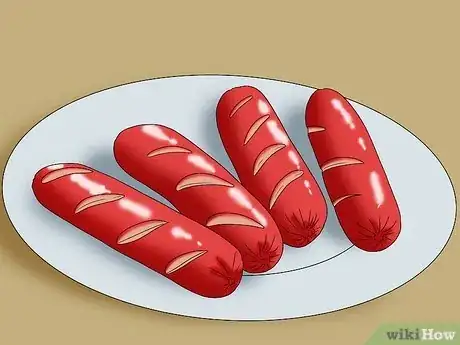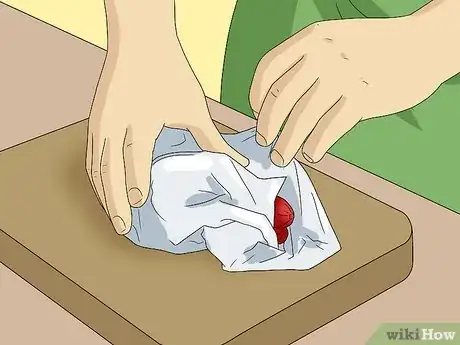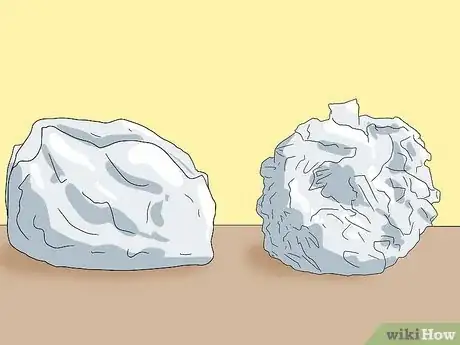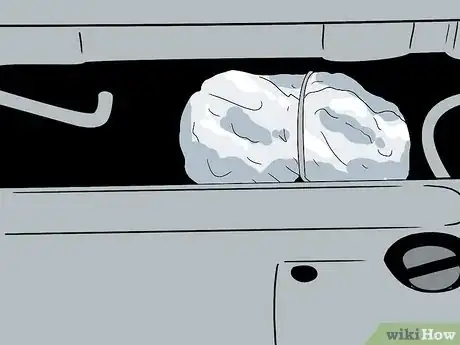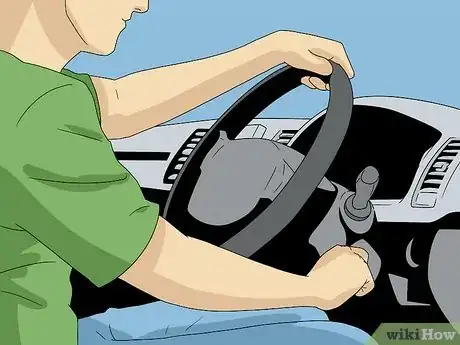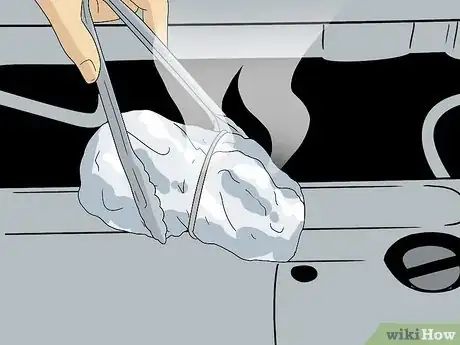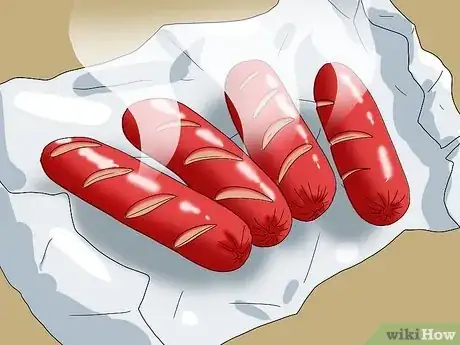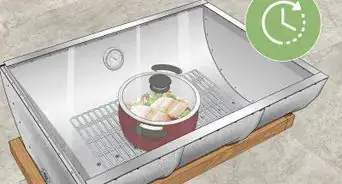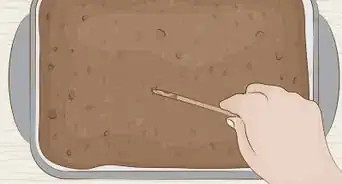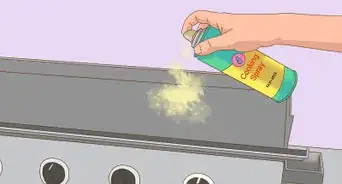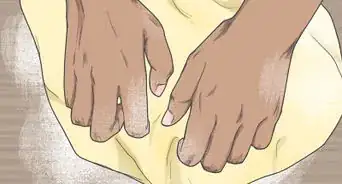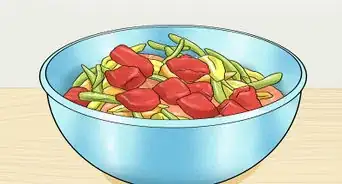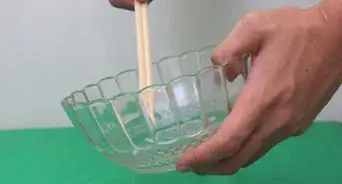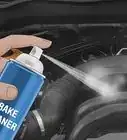wikiHow is a “wiki,” similar to Wikipedia, which means that many of our articles are co-written by multiple authors. To create this article, 39 people, some anonymous, worked to edit and improve it over time.
There are 9 references cited in this article, which can be found at the bottom of the page.
This article has been viewed 350,580 times.
Learn more...
Nothing puts a damper on a road trip like having to stop the car, pop the hood, and check the engine—unless of course you're just checking to see if your pork tenderloin is done. Engine-block cooking is a tradition going back almost as long as the automobile itself, and now that gasoline prices are at an all-time high, it's never made more sense to ask your engine to do more than just get you from point A to point B. Start your engines and get ready to carbecue!
Steps
-
1Plan the right meal for the trip. If you're not going to be taking a trip anyway, engine block cooking is probably the most expensive way to cook anything, so don't plan a trip just to cook. Instead cook a dish that fits your trip. Cooking on your car's engine is essentially the same as braising food, and cooking times are generally a bit longer than in a conventional oven and shorter than in a slow cooker. If you're taking a long road trip, you can cook just about anything—roasts, complete meals with Potato side dishes, etc.—but even a quick commute affords you enough time to heat up a pre-cooked breakfast sandwich, for example, or make some hot dogs. You can find carbecue recipes by searching for "engine block cooking," for example, or you can try to find a copy of Manifold Destiny, the definitive book on the subject. You can also use recipes from your cookbook and just experiment with cooking times. See the Tips section below for some sample cooking times and other considerations.[1]
-
2Prepare the food as you would if you were going to put it in your oven. You can follow the pre-cooking preparation directions in any oven recipe.Advertisement
-
3Wrap the food in aluminum foil. Tear off two or three sheets of heavy duty aluminum foil. Don't skimp on the foil, as you'll want to make sure that your food is completely wrapped and that you can fold one edge of the foil over the other—too much foil is better than too little.[2]
- Lay out the pieces of foil directly on top of each other, and then spread a little butter or oil (cooking oil, not motor oil) over the top sheet so your meal won't stick to it.
- Lay the food in the center of the sheet of foil and then wrap the foil over it. Fold the edges of the foil over each other so that the package is sealed all around.
-
4Find a suitable cooking surface on your engine. You can't just drop the food under the hood and expect it to cook; you first need to find a good, hot spot on the engine for it. Drive for a few minutes to warm up your engine, and then stop. Turn off the engine and open the hood. Find your engine's hot spots by quickly and lightly touching a finger to metal parts on the engine. Sounds like a recipe for burning your finger, doesn't it? Well it is, unless you really do it quickly and lightly. If you can hold your finger in a spot for more than a moment without getting burned, that spot's not hot enough. As a general rule, the best spot—if you can safely get to it—is on or near the exhaust manifold.
-
5Check the height of your cooking spot. Crumple up a piece of foil into a loose ball or cone. The foil should be about six inches high. Place it on the spot on the engine you've decided to cook on, and then close the hood. Reopen the hood—the foil has probably been compacted a bit.
-
6Make sure your food will fit snugly in the cooking spot. Remove the foil you used in the last step and place it next to your wrapped package of food. Compare the height of the foil "test ball" to the height of your food package. If the food package is higher than the test ball, your meal will be crushed when you close the hood. If it's more than a little lower, it won't fit snugly and may fall out of place while you're driving.[3]
-
7Secure the food package on the engine. Assuming the package is not too high to fit in the cooking area, place it on the engine. If it was lower than the test ball, crumple up a little foil to lay on top of the package. You don't want the food moving from side to side, either, so make sure it's a snug fit all around. You can do this either by surrounding it with additional crumpled foil pieces or by tying it down. Some people will ease the food package under conveniently located rubber hoses, for example, or you can use wire to tie the food down. Use common sense when securing the food. Avoid placing it near moving parts, and don't strain hoses by trying to force the package under them. If you're going to use wire, use baling wire rather than trying to use the wires that are already in your engine compartment.[4]
-
8Drive until the food is done. As with all cooking, a little trial and error is usually necessary before you get a feel for the proper cooking times. Even if you're following an engine-block cooking recipe, it's a good idea to check on the food a little before the time (or mileage) when it's supposed to be done. If you need to put it back in, remember to reseal and secure the package.[5]
-
9Remove the food carefully and enjoy. First, turn off the engine. Second, remember that the engine is hot, and the food will be hot, so use tongs and/or potholders to remove the food—you wouldn't just grab a hot pan out of the oven with your bare hand! Unwrap it and serve. If you've still got some driving to do, skip the wine.[6]
-
10Finished.
Warnings
- Protect your engine. Improperly wrapped food can really make a mess of your engine. Additionally, there is a slim possibility that the exhaust manifold could crack if cool liquid drips on it while it's hot. This would probably only be a problem if you "preheated" your engine and then allowed some liquid from the food to drip onto the manifold before the liquid got hot from cooking.⧼thumbs_response⧽
- The vibrations and airflow under the hood could cause a leak in a foil package, spilling liquids, esp. cooking oil or grease on the manifold and causing smoke or a fire. Even if the container is tied with wire, the same vibrations might cause the wire to rub through a vacuum hose or electrical wire and lead to similar disaster.⧼thumbs_response⧽
- Wrap the food very tightly and make sure it's well sealed. If the car's exhaust system is properly functioning, potentially dangerous fumes will be taken out the exhaust rather than entering the engine compartment. If you have any sort of fluid leaks, however, gases may enter the engine compartment through evaporation. While the danger these may pose to your health is minimal—unless, maybe, you're cooking on your engine block every day—they may affect the taste of your food.⧼thumbs_response⧽
- Beware of the engine fan, generally behind the radiator. On modern cars it is automatic and electrically powered, and can be on even shortly after the car has been turned off. It can cause severe finger damage.⧼thumbs_response⧽
- Steer clear of the accelerator linkage. This mechanism goes from the gas pedal to the engine, and if your food obstructs it your accelerator could be stuck at full throttle.⧼thumbs_response⧽
- Turn off the engine before opening the hood. To avoid serious injury, don't try to place, check, or remove your food with the engine running.⧼thumbs_response⧽
Things You'll Need
- Vehicle with functioning engine
- Tin foil
- Tongs
- Food
- Paper/plastic plates, forks, etc. if you plan to eat while continuing your trip (optional)
References
- ↑ https://www.howcast.com/videos/1225-how-to-cook-on-your-car-engine
- ↑ https://www.youtube.com/watch?v=yF-7LcMHTn8
- ↑ https://jalopnik.com/the-ten-best-recipes-for-cooking-with-your-car-5913336
- ↑ https://jalopnik.com/how-to-cook-a-delicious-meal-with-your-car-1775720726
- ↑ https://www.autoblog.com/2016/08/29/how-to-cook-food-using-your-car/
- ↑ https://www.youtube.com/watch?v=IFQCrDOq-oY
- https://www.wired.co.uk/article/cook-on-a-car-engine
- San Francisco Chronicle
- WiseBread.com
About This Article
To cook food on your car's engine, prepare the food as if you were going to be cooking it in your oven, but wrap the food in aluminum foil. Find a hot spot on your engine for cooking by driving for a few minutes and then turning off the engine to open the hood and see which places are warmest, which is usually the exhaust manifold. Then, place the food there, and secure it in place by carefully wrapping wire around the aluminum and the engine part where it's resting. Drive for about as long as it would take to braise the item in an oven, and check the food to make sure it's done before you enjoy. For tips on making sure your food will fit under the hood, read on!
